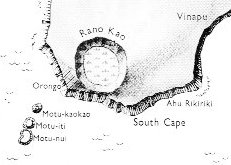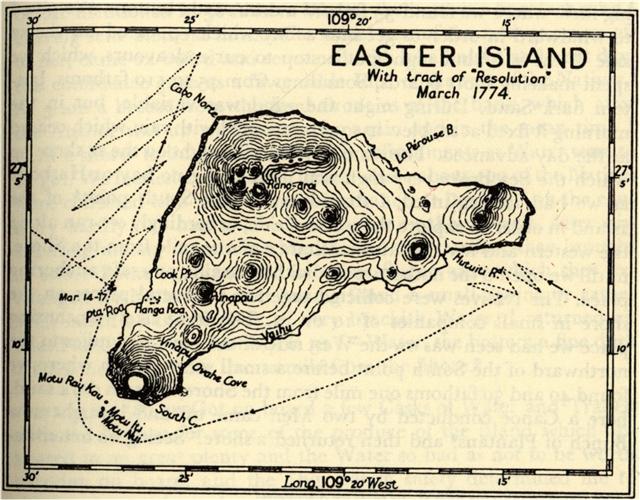6. When the dream-soul of the sleeping Hau Maka reached Easter Island she (it must be a she because it was nighttime) arrived from the southwest (toga) direction and moved along the southern coast of the island: The dream soul of Hau Maka countinued her journey and, thanks to her mana, reached another land. She descended on one of the small islets (off) the coast. The dream soul of Hau Maka looked around and said: 'These are his three young men.' She named the three islets 'the handsome youths of Te Taanga, who are standing in the water'. The 'three young men' who are 'standing in the water' was the distinctive landmark used in order to recognize Easter Island when they were arriving in a ship from far away:
Easter Island has a number of prominent landmarks but the 3 islets outside the southwestern corner of the island is the primary one, not only for the navigator but also according to the myths. Mythic landmarks are also provided by the pair of volcanic craters (rano) at the beginning and end of the southern shoreline, Rano Kau in which water always could be found and Rano Raraku where the famous statues were 'born' (cut out from the rock). Although there are several more craters on the island I believe these two are special. More craters can be seen for instance on a map drawn up in 1774 when Captain Cook visited the island:
The dotted line describes the path of his ship. The other maps which I am presenting in order to follow the kuhane of Hau Maka are from Thor Heyerdal et al. Reports of the Norwegian Archaeological Expedition to Easter Island and the East Pacific. Volume 2. |

